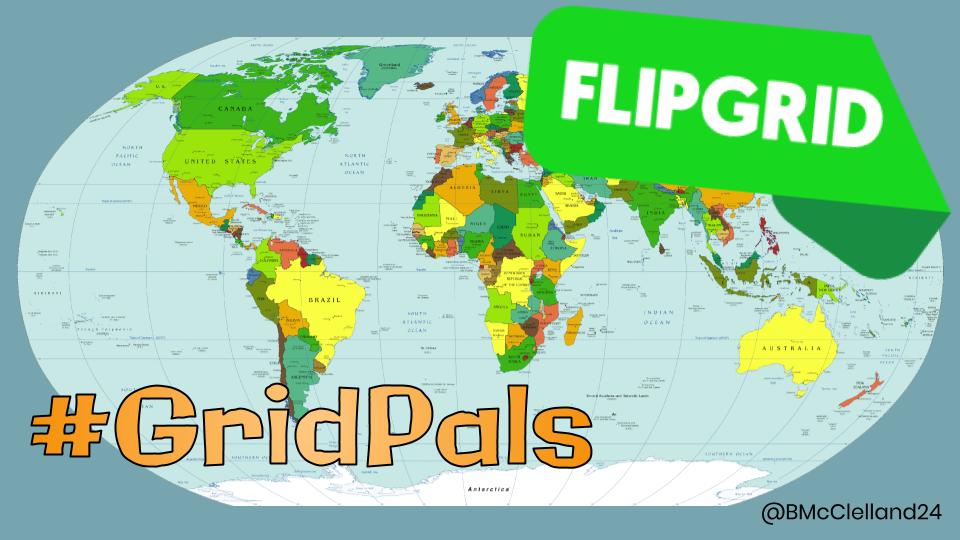Why are Two Heads are Better than One
In recent years parts of the world have become increasingly disconnected, with nationalism increasingly driving many countries' policies, rather than a global perspective. However, is this the best approach when it comes to teaching our learners?
As ISTE Global PLN Chair, I would suggest exposing learners to global connections has many inherent advantages. The process of building a classroom beyond national borders builds cultural understanding, communication skills, and knowledge and awareness of the wider world. Additionally, while this approach to learning is not novel, it is reaching a new level of efficacy as technology allows the development of global student collaboration allowing students to tackle a local issue of concern and solve problems with their international peers.
Classrooms tend to focus on knowledge acquisition and are driven by assessment. However, education is more than offering knowledge. It is also about offering skills, opportunities, and instilling empathy into our learners.
One example of the powerful use of technology in combination with pedagogy is the Climate Action project which is the brainchild of Belgian education Koen Timmers. In the interdisciplinary project, the idea is to break down the walls of the classroom and connect learners globally. During the project, the students also incorporate technology to find and structure thinking, present and share their findings through a range of media including composing songs, robotics, stop-motion videos, and prototyping to solve local issues around the UN Sustainable Development Goals. Teachers become discussion leaders and mentors making sure the learners verify their sources and maintain a clear focus.
The power of the project is true global collaborative learning. The learners build knowledge through teamwork that is interdisciplinary and cross-cultural. The learners share responsibility and make substantive decisions to solve the local problems in each of their communities with their global peers.
The project perfectly illustrates the importance of global collaboration to learning highlighted by global education specialist Erin Dowd:
It shows to our learners that humanity is more alike than different. During the collaboration, learners focus on what they have in common to solve problems, like computer games they play or what football team they support. This allows a human connection to find a common understanding, without this they would never be able to interact.
It allows learners to use inquiry in their learning. When learners are given the chance to ask experts and other learners questions, they’ll come up with some really amazing ones. No question is ever too stupid to ask. These questions may lead to more incisive ones and send learners down interesting and worthwhile paths.
It allows learners to become experts. When learners work with learners in other countries, they can become the teachers and vice versa allowing them to truly understand ideas and concepts.
It teaches empathy. When my students Skyped with students from the Kakuma refugee camp in Kenya to teach the class about biology, they saw firsthand what real refugees looked. They learned that their distant peers were hungry to learn yet had no shoes. The experience was humbling and made the world of refugees real to them and that small actions have large effects.
Another example of global connection that can be a stepping stone is the use of Skype to connect to classrooms worldwide. This month, nearly half a million students, teachers, and guest experts will connect via Skype to see how many virtual miles they can travel around the world in 48 hours in Microsoft's Skypeathon.
The mission of the event is to open hearts and minds by raising awareness of different cultures, values, and perspective, and to help support quality education for thousands of students around the world.
The use of Skype to connect with experts also introduces our learners to careers they have never imagined. Imagine forgoing internet sites or textbooks covering marine biology to connect with students studying dolphin behavior in Ecuador or plate tectonics with a volcanologist who works on an active volcano or talking about STEM careers with employees at Pfizer. Likewise, learners can receive first-hand accounts of theories in social sciences from psychology students in Bangladesh, or first graders can talk about their families with other first-graders in Kenya.
This gives the learners an opportunity to ask questions that go beyond what they can learn on the internet. Learners are more likely to engage with subjects they are in interested and excited about, and as a result, more readily retain new information.
Another final example that can be used is Flipgrid Pals the inspiration of educator Bonnie McClelland. In Flipgrid Pals educators connect, using Flipgrid to increase social learning, global empathy, and cultural understanding. You can collaboratively manage your Grids and Topics with a fellow educator to allow these connections to occur.

The world is constantly changing. Though teachers do their best to provide their learners with cutting-edge educational methods in the classroom, global collaboration is an organic way for classes to discover new ways of thinking, exploring, and learning. Learners will gain genuine, relatable information by asking questions, equating real-life situations with their own experiences, and broadening their own scope of knowledge and understanding.



Comments